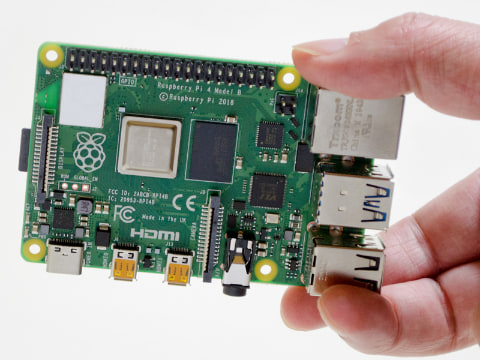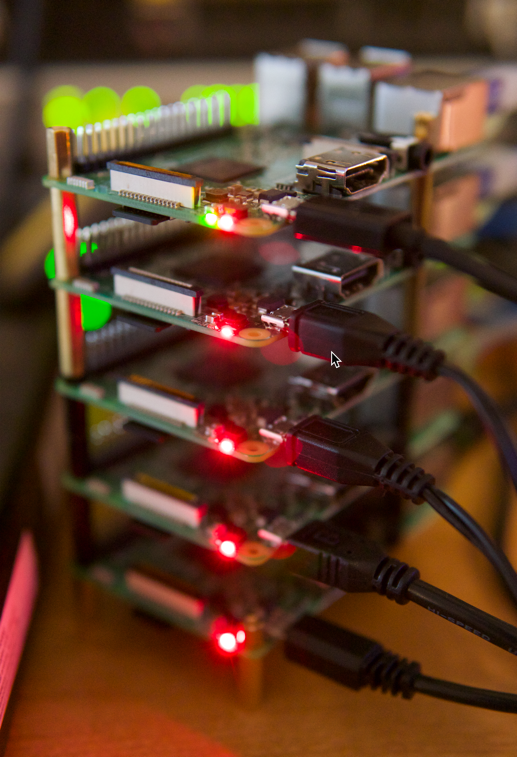- To generate this secure string, you can run the following command on your Raspberry Pi. Openssl rand -base64 48. Ensure you keep this token secret as this will let anyone have full access to the Bitwarden RS server. Accessing the Admin Page. We now need to feed this new admin token into our Raspberry Pi’s Bitwarden Docker container.
- The Raspberry Pi is an excellent platform for starting to learn OpenCV and also doubles as an affordable and small device. Here is all the equipment that we recommend for this Raspberry Pi OpenCV tutorial. Raspberry Pi 1, 2, 3 or 4. Ethernet Cord or WiFi dongle (The Pi 3 and 4 has WiFi.
- Docker Container For Raspberry Pi
- Docker For Raspberry Pi 4
- Docker For Raspberry Pi Zero
- Docker For Raspberry Pi
- Docker For Raspberry Pi 3 B+
Estimated reading time: 4 minutes
Welcome! We are excited that you want to learn Docker.
Raspberry Pi 3B+ The Raspberry Pi 3B+ supports USB mass storage boot out of the box. Raspberry Pi 2B v1.2, 3A+, 3B, Compute Module 3, 3+ On the Raspberry Pi 2B v1.2, 3A+, 3B, and Compute Module 3, 3+ you must first enable USB host boot mode. This is to allow USB mass storage boot, and network boot. Note that network boot is not supported on the.
This page contains step-by-step instructions on how to get started with Docker. In this tutorial, you’ll learn how to:
- Build and run an image as a container
- Share images using Docker Hub
- Deploy Docker applications using multiple containers with a database
- Running applications using Docker Compose
In addition, you’ll also learn about the best practices for building images, including instructions on how to scan your images for security vulnerabilities.
If you are looking for information on how to containerize an application using your favorite language, see Language-specific getting started guides.
We also recommend the video walkthrough from DockerCon 2020.

Download and install Docker
This tutorial assumes you have a current version of Docker installed on yourmachine. If you do not have Docker installed, choose your preferred operating system below to download Docker:
For Docker Desktop installation instructions, see Install Docker Desktop on Mac and Install Docker Desktop on Windows.
Docker Container For Raspberry Pi
Start the tutorial
If you’ve already run the command to get started with the tutorial, congratulations! If not, open a command prompt or bash window, and run the command:

You’ll notice a few flags being used. Here’s some more info on them:
-d- run the container in detached mode (in the background)-p 80:80- map port 80 of the host to port 80 in the containerdocker/getting-started- the image to use
Tip
You can combine single character flags to shorten the full command.As an example, the command above could be written as:
The Docker Dashboard
Before going too far, we want to highlight the Docker Dashboard, which givesyou a quick view of the containers running on your machine. The Docker Dashboard is available for Mac and Windows. It gives you quick access to container logs, lets you get a shell inside the container, and lets youeasily manage container lifecycle (stop, remove, etc.).
To access the dashboard, follow the instructions for either Mac or Windows. If you open the dashboardnow, you will see this tutorial running! The container name (jolly_bouman below) is arandomly created name. So, you’ll most likely have a different name.

Docker For Raspberry Pi 4
What is a container?
Now that you’ve run a container, what is a container? Simply put, a container issimply another process on your machine that has been isolated from all other processeson the host machine. That isolation leverages kernel namespaces and cgroups, features that have been in Linux for a long time. Docker has worked to make these capabilities approachable and easy to use.
Creating containers from scratch
If you’d like to see how containers are built from scratch, Liz Rice from Aqua Securityhas a fantastic talk in which she creates a container from scratch in Go. While she makesa simple container, this talk doesn’t go into networking, using images for the filesystem, and more. But, it gives a fantastic deep dive into how things are working.
Docker For Raspberry Pi Zero
What is a container image?
When running a container, it uses an isolated filesystem. This custom filesystem is provided by a container image. Since the image contains the container’s filesystem, it must contain everything needed to run an application - all dependencies, configuration, scripts, binaries, etc. The image also contains other configuration for the container, such as environment variables,a default command to run, and other metadata.
We’ll dive deeper into images later on, covering topics such as layering, best practices, and more.
Info
Docker For Raspberry Pi
If you’re familiar with chroot, think of a container as an extended version of chroot. Thefilesystem is simply coming from the image. But, a container adds additional isolation notavailable when simply using chroot.
CLI references
Refer to the following topics for further documentation on all CLI commands used in this article:

Docker For Raspberry Pi 3 B+
get started, setup, orientation, quickstart, intro, concepts, containers, docker desktop